Reading Comprehension Text and Exercises
World's Largest Countries
There are 195 different countries in the world, and this number seems to be ever increasing. While some countries are in fact small towns with few residents, other countries are so large they can be homes to snow and sunny weather at the same time.
Top six largest countries in the world account for nearly half of all the land in the world, so they never cease to inspire with their geography, as well as animal and plant diversity.
Click Here for Step-by-Step Rules, Stories and Exercises to Practice All English Tenses
Russia
When it comes to size, no other country in the world comes close to Russia. With the total area of 6,612,100 square miles (17,125,200 km2), Russia spans across the entire north of Asia, and it also has a small part which geographically belongs to Europe.
Russia is so large it covers one-eighth of all inhabited land area on our planet. Although the largest, this is only the ninth most populated country in the world with 144 million people, most of whom live in the European part.
Spreading across eleven different time zones, Russia's land is covered in steppes in the south, and tundra in the north, which is called Siberia. The north coast of Russia is usually covered in snow every single day of the year.
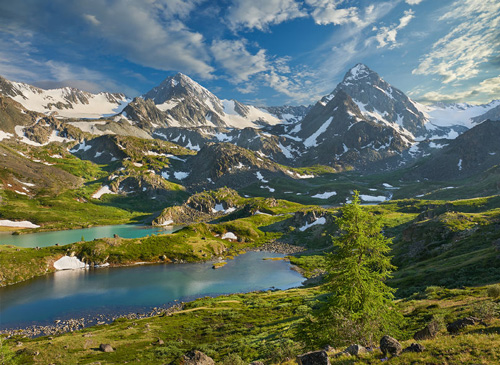
A steppes is a large, flat area of land with grass but no trees. A steppes recieves little rain each year. This is enough rain to support grasses, but not enough for trees to grow. It is found in temperate (without extreme cold or heat) regions of earth.
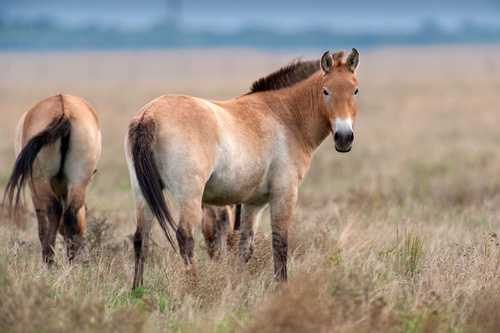
A tundra is a large, flat area of land with only low growing plants. It is found in very cold regions of earth. Tree growth is difficult there because of the cold temperatures, and without much plants, few animal species can survive there.
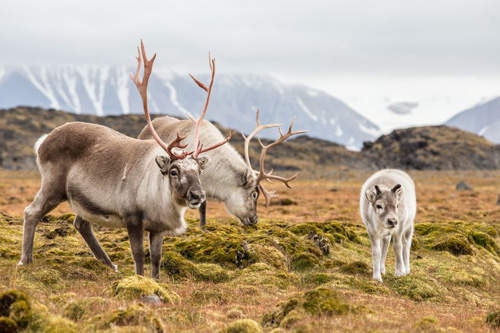
Canada
The second largest country in the world, occupying 3,855,100 square miles (9,984,670 km2), is situated on the North American continent and has only 36 million people.
Like in Russia, some parts of Canada are extremely cold, covered in snow all year round. The world's northernmost settlement, only 508 miles away from the North Pole, is also situated in Canada. Indigenous people like the Inuit, a group of Eskimos who still build snow houses or igloos, had lived in Canada for thousands of years before European settlers came.
Although Canada is a sovereign country, led by a Prime Minister and the Parliament, British Queen Elizabeth II is officially still the ruling monarch.
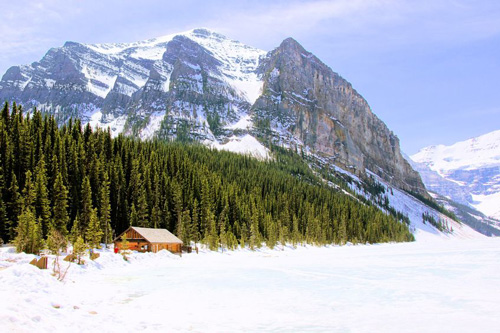
United States of America
Bordering only Canada and Mexico, the United States of America (US) incorporate 3,796,742 square miles (9.833,520 km2) of the Northern American continent.
The US is a federation of 50 states, famously depicted as stars on its flag. Forty eight of these states are contiguous (sharing a common border), while Alaska, which was bought from Russia in the 19th century, is in the northwestern corner of the continent, across the entire Canada.
The state of Hawaii is also detached from other states, being an archipelago (a group of small islands) in the Pacific.
Extreme weather conditions are very likely in the south of the country. In fact, most of the world's tornadoes happen in the US.
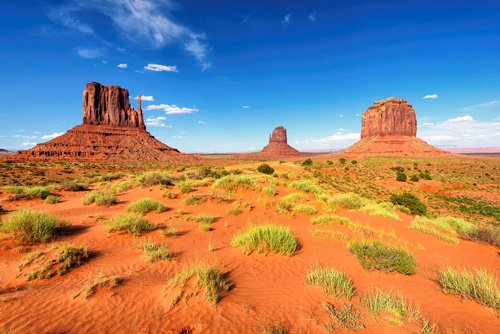
China
Despite having much smaller territory than Russia, China is by far the most populated country in the world with 1.4 billion of people.
Spreading across 3,705,407 square miles (9,596,961 km2), Chinese landscape varies greatly from one region to another, with grasslands, steppes, forests and even deserts.
Due to the fertile basin (an area of land from which water flows into a river) of the Yellow River, now located in the north of the country, China was able to rise as one of the earliest and most powerful civilizations in the world. It is also one of the few communist (non-democratic) countries in the world.
Hosting nearly 35,000 different species of animals and plants, China is one of the most biodiverse countries in the world, and home to the popular black and white pandas.
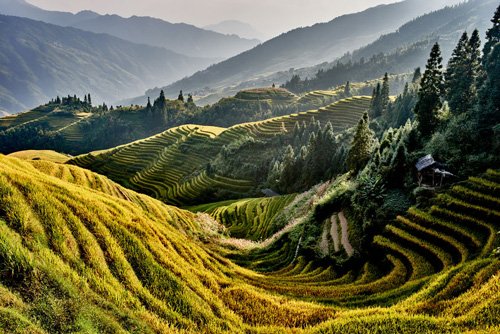
Brazil
Brazil, the largest country in South America, has a population of 208 million and a territory of 3,287,956 square miles (8,515,767 km2).
Having once been a Portuguese colony, Brazil today has very ethnically diverse population, with half of the residents identifying as mixed race, and notable Asian and indigenous minorities.
Since the Amazon River basin is located in Brazil, the vast tropical forest around it accounts for much of Brazil's territory. The Amazon rainforest is a protected habitat (natural home of an animal or plant), unique not only for its rich wildlife, but also because some 70 isolated tribes still live in it.
Due to heavy industrialization, this natural heritage of Brazil is now threatened by mining, oil extraction and dam building.
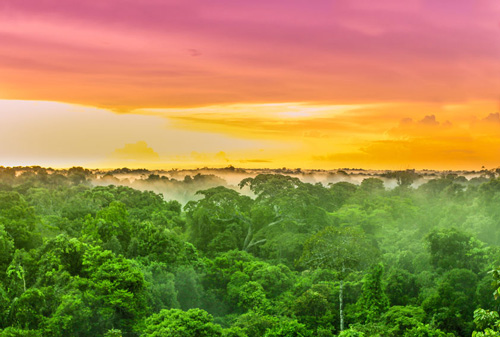
Australia
The only country on the Australian continent, Australia is composed of a massive mainland, the island of Tasmania and several smaller islands, spreading across 2,969,907 square miles (7,692,024 km2).
Australia was completely unexplored by outsiders until the first Brits settled in the 18th century. Prior to that, the country was solely inhabited by indigenous Australians, called Aborigines. These groups, who ones spoke 250 different languages, now make up only 2% of the total population.
Australians normally live in coastal areas, so the largest middle part of the country mostly has deserts, grasslands, and very few people. Australia is known as the home of koalas, kangaroos and hundreds of venomous (poisonous) species.
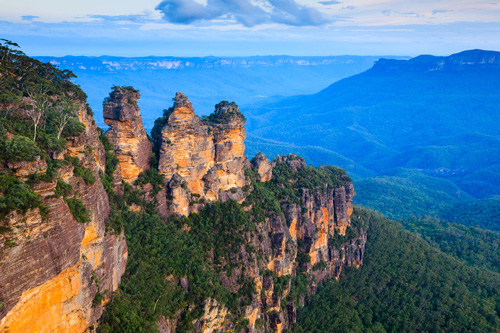
Comprehension Exercises
Vocabulary Questions
- What does "habitat" mean?
- home built by humans
- natural home of an animal or plant
- something that occurs often
- What does "venomous" mean?
- friendly
- nurturing
- poisonous
- What does "contiguous" mean?
- sharing a common border
- spreading like a disease
- dependent
- What does "biodiversity" mean?
- number of different species
- two plants from a different family
- healthy ingredients
- What does "tribe" mean?
- unexplored area
- family of wild cats
- group of people living together
Collocation Questions
- Indigenous people make up only 2% of Australia's __________ population.
- complete
- overall
- total
- The natural heritage of Brazil is threatened by oil __________.
- removal
- extraction
- withdrawal
- Many Brazilians identify as __________ race.
- mixed
- heterogeneous
- varied
- __________ weather conditions are common in the US.
- Intense
- Extreme
- Exceptional
- The Chinese first settled around the __________ basin of the Yellow River.
- productive
- prolific
- fertile
- When it comes to size, no country comes __________ to Russia.
- near
- next
- close
- The Amazon rainforest is a __________ habitat.
- protected
- monitored
- secured
- The state of Hawaii is detached __________ other states.
- of
- off
- from
- Large countries never __________ to inspire with their biodiversity.
- conclude
- halt
- cease
- Seventy __________ tribes still live in Brazil.
- isolated
- solitary
- obscure
Wh Questions
- Where do koalas live?
- in Siberia
- in Australia
- in Brazilian rainforest
- What country has the largest population?
- Russia
- the US
- China
- Why is the Amazon rainforest protected?
- because expensive coffee beans grow there
- because of the Olympic games
- because unique animals and plants live there
- How did Alaska become a part of the US?
- It was bought from Russia.
- It was conquered in a war.
- It was a gift from Queen Elizabeth II.
- When does it snow in the north of Russia?
- from December until March
- almost every day
- never
Evaluating Statements
- Based on the information in this lesson, which statement is true?
- Canada is not an independent country, it belongs to the United Kingdom.
- Canada is an independent country.
- Based on the information in this lesson, which statement is false?
- In Brazil, there are still people living in the forest.
- In Brazil, all people live in villages and cities.
True or False?
- Based on the information in this lesson, is the following statement true or false?
"The middle part of the country is the most densely populated area in Australia." - True
- False
- Based on the information in this lesson, is the following statement true or false?
"Forty-eight US states have borders with at least one other US state." - True
- False
Answer Key
1. B | 2. C | 3. A | 4. A | 5. C | 6. C | 7. B | 8. A | 9. B | 10. C | 11. C | 12. A | 13. C | 14. C | 15. A | 16. B | 17. C | 18. C | 19. A | 20. B |21. B | 22. B | 23. B | 24. A
Get Updates, Special Offers, and English Resources
Download your FREE GIFT (the first two chapters of
English Short Stories Book and Workbook)
as soon as you join!

By submitting your email, you consent to receiving updates and newsletters from us and to the sharing of your personal data with third parties for the purposes of sending you communications. We will not spam you. You can unsubscribe at any time. For more information, please see our privacy policy.





